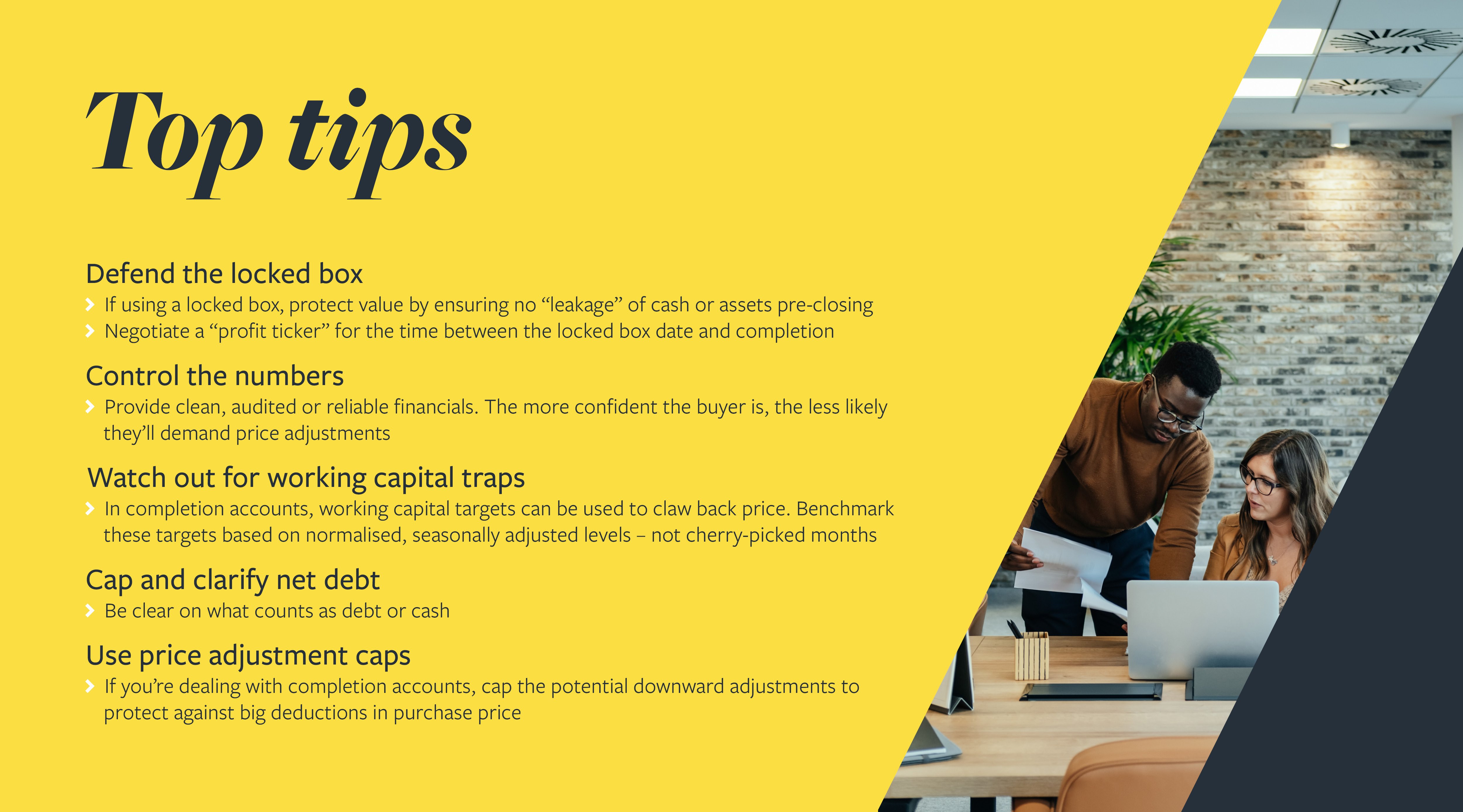When selling your business, the main goal is often straightforward: make the most money from the sale. However, the road to that ultimate payout is not always smooth. Buyers often include clauses and mechanisms in the deal that can chip away at the final purchase price, sometimes leaving you with less than you expected. Two common deal pricing structures are completion accounts and locked box mechanisms with each offering different advantages and challenges. The pricing structure may be coupled with an earn-out where part of the purchase price is tied to future performance. The key is choosing the one that best suits your goals and the specifics of your deal.
Before diving into the technicalities of each, ask yourself these key questions:
- Is the target company’s financial performance unstable, unpredictable or cyclical?
- How complicated is the deal? Is it straightforward or somewhat complex?
- Is there likely to be disputes over the final price?
- Do you want a quick, hassle-free exit once the deal is sealed?
Locked Box: price certainty with fewer adjustments
How it works: In a locked box structure, the purchase price is determined based on a historical set of accounts as at a specific date (known as the ‘locked box date’). From that point onward, the buyer enjoys any profits generated until the deal closes, but also takes on the risk of any losses. Sellers are not allowed to extract value from the business after the locked box date, which is referred to as ‘leakage’. Sellers could negotiate a ‘profit ticker’, which is a portion of the profits of the target business which are generated between the ’locked box date’ and closing, which is particularly useful where there is a lengthy period between them.
Pros
- The purchase price is agreed upon early in the deal, so you do not have to worry about last-minute adjustments.
- The structure allows for a faster, cleaner exit, with less potential for disputes after closing.
Cons
- You will not benefit from any profits generated by the business between the locked box date and the deal closing (unless the buyer is willing to agree to a profit ticker).
- Negotiating the locked box date and setting the terms for permitted leakage is critical as it could limit your ability to operate the business freely before the deal is finalised.
Which structure is right for you?
Choosing the right pricing structure depends largely on the specifics of your deal. If the transaction is straightforward, or if you want a quick exit with minimal post-closing disputes, the locked box structure might be your best bet. It provides certainty, reduces the risk of unexpected surprises and leads to a smoother closure. However, if you are looking for more flexibility and the chance to benefit from positive performance up to closing, completion accounts could be more appealing.
